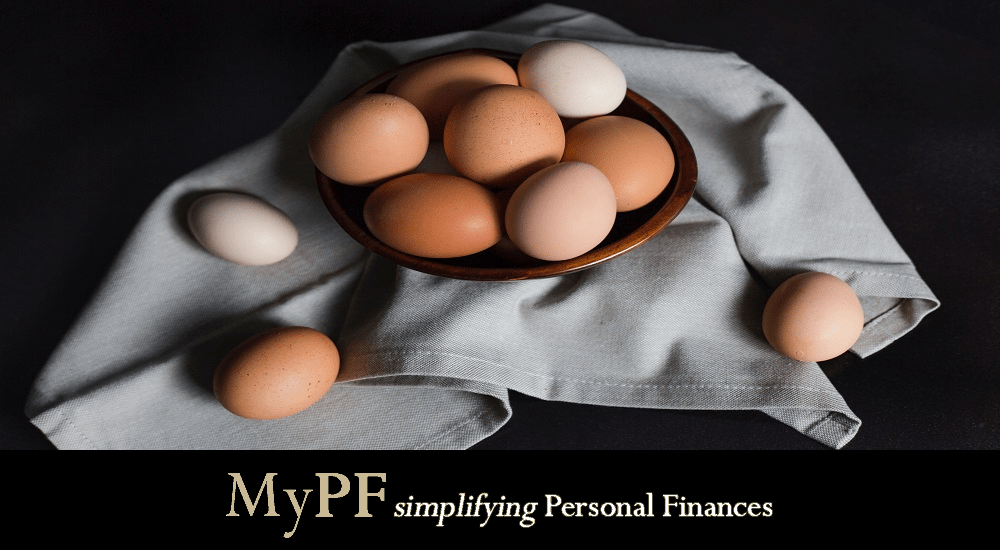Boom! Silicon Valley Bank’s collapse could teach us a thing or two about banking!
There’s been a lot of news lately on the Silicon Valley Bank (SVB) collapse and you might be wondering what’s the big deal about it. After all, this is happening in the United States while we are all the way here in Malaysia.
While it does not affect Malaysians directly, the SVB experience is a good example to remind ourselves not to take things for granted. There are many personal finance lessons that we can learn about banking in general from this.
Here are 5 things that you can learn about everyday banking from SVB!
Contents
#1: Are Your Bank Deposits Covered by PIDM?
Did you know, the savings that we put in the bank are typically insured by Perbadanan Insurans Deposit Malaysia (PIDM) up to RM250,000 per depositor per bank?
The SVB saga reminds us how important deposit insurance is to a regular person on the street. Luckily, many of SVB’s clients’ deposits are protected by Federal Deposit Insurance Corporation (FDIC) for up to US$250,000.
What does this mean exactly? If Ali puts about RM250,000 of his savings in a bank of his choosing (Maybank, CIMB, Ambank, Public Bank, etc), he will definitely get back his RM250,000 from PIDM if the bank could not give back his money (for whatever reason). Think of it like an insurance policy in that your deposit is insured by PIDM if something unfortunate happened to the bank.
Most of the commercial banks in Malaysia falls under this PIDM insurance coverage but there are some smaller banks that do not offer this coverage. To get a comprehensive list of the banks that are covered under PIDM, visit PIDM’s website here.
#2: Spread Your Savings Around
Don’t put all your eggs in one basket – an old saying that you have heard about many times. This is very true when it comes to your savings in banks. Do not put your whole savings in one bank.
The mistake that some of SVB’s clients did was putting the majority of their savings in SVB only. While the FDIC did provide insurance on their deposits, it only covered for up to US$250,000. That means if you put in US$500,000, you could lose half of your savings with SVB.
This is a good reminder for many Malaysians that even if you are 100% confident in your bank, consider putting your savings in multiple banks. PIDM’s insurance coverage applies to one deposit per bank, so that means if you divide your RM750,000 savings across three different banks, you essentially have three insurance coverage of up to RM250,000 per bank.
#3: Make Sure Your Banks Are Sound
How do you even know whether your bank is “sound”? As a regular person on the street, it is hard to know whether the bank you put your money in is safe. You just sort of assume they are since they are reputable and big, and many of your friends also have savings in them.
There is just so many subjective ways of determining whether a bank is sound – and not one can conclusively do so. For many of us, diving deep into the banks financial statements, balance sheet, cashflows are the realms of seasoned financial and investment analysts and even then, they might not be able to do so effectively.
However, the best and most simple way that you can do is by just answering one straightforward question: Is the bank profitable?
What this means is that in the past 3 to 5 years, the bank needs to be making consistent profits and not losses. If the bank is doing well, there is nothing to worry about and vice versa.
#4: Research What the Bank is Doing with Your Savings
This is what SVB did with the money that their customers deposited – it invested them in U.S. government bonds. In a nutshell, U.S. government bonds value went down significantly when the Federal Reserve increased interest rates, and SVB suffered a big loss.
A bank typically makes money through taking in deposits from their customers and loaning them out to people who need to buy houses, cars, and other things. The people who take up these loans will pay interest to the banks, where the bank in turn will return the money to their customers. However, the bank can also use their customer’s money to invest in shares and bonds, where they are expected to make more money when these investments do well.
Hence, here is what you can do to research what the bank is doing with your savings. Most of us are not financial experts, but you can ask your bank representative to provide a simple summary of the bank’s loans and investments.
You just need to know out of 100% of its total asset, how much percentage is the investment to total asset proportion is. SVB’s ratio was 57% which means more than half of their assets were in investments, which makes SVB risky.
A 10% to 20% ratio can be considered strong and sage for a regular person to take comfort in.
#5: A “Bank Run” is Scary When Everyone Believes So
Most of us do not know what a bank run is. Imagine this, you are in line at the bank and you overheard that some people at the front of the queue complaining about not being able to withdraw their money. You panic a bit, and rushed to ask for your money as everyone starts panicking too. The bank says it doesn’t have enough money to pay everyone, and this just makes things worse as more and more people want to withdraw their savings from the bank.
A bank run is exactly that and it happened to SVB. Too many people were asking for their money back from the bank, while the bank did not have enough cash. Sooner or later, more panic sets in, making the situation worse.
This actually happened before in Malaysia in 1999, where MBf Finance struggled to give money back to their customers and Bank Negara Malaysia had to step in.
For many of us, a bank run is out of our control. It just takes a small initial panic among some depositors to trigger a bigger crisis. However, you can take some precautionary steps in this. Consistent with #2 previously, don’t put all your eggs in one basket. Put your savings in different banks to diversify your risks!
Conclusion
The SVB experience is an invaluable learning experience for many of us. It might not affect us directly, but its collapse provides many important learning lessons for our banking activities everyday. It teaches us not to take things for granted and always be vigilant and prudent with our savings. What is safe today may not be so tomorrow.
Let us know in the comments below on what you think about SVB!











Leave A Comment